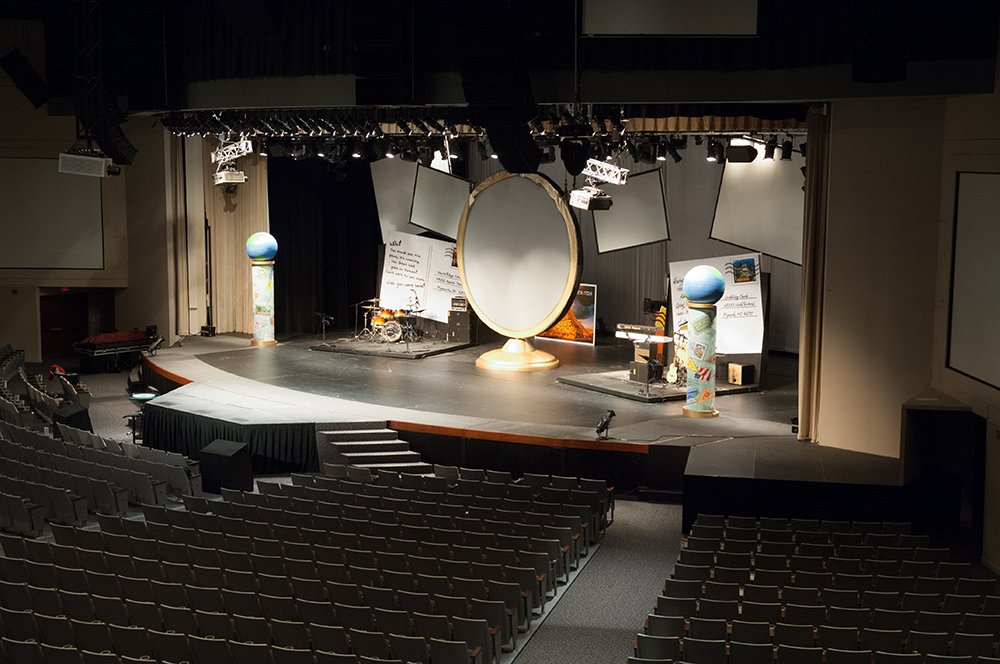Selecting the appropriate stage deck material is crucial for the success of any performance venue. The right material not only enhances the aesthetic appeal but also plays a significant role in safety and longevity. In this article, we will delve into the reasons why stage deck materials matter, focusing on safety concerns, durability, and maintenance, to help you make informed decisions for your venue.
1. The Importance of Stage Decks
Stage decks serve as the foundation for performances, providing a stable platform for performers, equipment, and audience interaction. The material chosen for the stage deck significantly impacts its strength, safety, and overall functionality. Understanding these factors is essential for anyone involved in event planning or venue management.
2. Safety Considerations
2.1. Weight Capacity
One of the most critical safety concerns is the weight capacity of the stage deck. Different materials have varying load-bearing capabilities:
- Plywood: High-quality plywood can support adequate weight but may not be suitable for heavy equipment without reinforcement.
- Aluminum: Lightweight yet strong, aluminum decks often come with specifications that clearly outline their weight limits, making them safer for heavy performances.
- Composite: Composite materials are designed to handle significant loads and often exceed the weight limits of traditional materials.
Choosing a material with appropriate weight capacity is vital for preventing accidents and ensuring performer safety.
See Also: The Complete Guide to Platforms for Medal Winners: Elevate Your Awards Ceremony
2.2. Slip Resistance
Another crucial safety factor is the surface texture of the stage deck:
- Plywood: While generally stable, plywood can become slippery when wet or if treated with certain finishes.
- Aluminum: Depending on the finish, aluminum can be quite slick, necessitating additional safety measures like non-slip coatings.
- Composite: Many composite materials are designed with textured surfaces to enhance grip, making them a safer option.
A surface that minimizes the risk of slipping is essential for maintaining safety during performances.
2.3. Stability and Structural Integrity
The stability of the stage deck is paramount. A deck that shifts or wobbles can lead to accidents:
- Plywood: If not properly installed, plywood can warp or buckle over time.
- Aluminum: Its modular design often improves stability, allowing for secure connections.
- Composite: Known for their durability, composite decks maintain their shape and integrity, even under heavy use.
Choosing a material that offers excellent structural integrity will reduce the likelihood of accidents and enhance performer confidence.
3. Longevity and Durability
3.1. Wear and Tear
The frequency and type of events hosted at your venue will dictate how much wear and tear your stage deck will experience. Here’s how different materials hold up:
- Plywood: While initially sturdy, plywood may require frequent repairs or replacement due to scratches, dents, and moisture damage.
- Aluminum: Resistant to rust and corrosion, aluminum decks can last for years with minimal maintenance.
- Composite: These materials are designed to withstand the elements and heavy usage, offering longevity without significant upkeep.
The right choice will save you money and hassle in the long run.
3.2. Maintenance Requirements
Different materials come with varying maintenance needs:
- Plywood: Requires regular checks for warping and may need sealing to protect against moisture.
- Aluminum: Typically low-maintenance, requiring only occasional cleaning to maintain its appearance.
- Composite: Designed for minimal upkeep, composite materials often only need a simple wash to keep them looking new.
Investing in a low-maintenance option can free up resources for other aspects of venue management.
See Also: Portable Stages for Outdoor Events: What to Consider
4. Cost-Effectiveness
While initial costs are important, considering long-term value is crucial.
- Plywood: The initial investment is low, but frequent repairs can add up over time.
- Aluminum: A higher upfront cost can be offset by its durability and low maintenance.
- Composite: While expensive initially, the longevity and low upkeep make it a wise investment.
Understanding the total cost of ownership will help you make a financially sound decision.
5. Aesthetic Appeal
The appearance of your stage deck also matters. A visually appealing stage can enhance the overall experience for performers and audiences alike:
- Plywood: Can be painted or finished, but may not offer the same visual appeal as other options.
- Aluminum: Often seen as industrial, but can be customized for visual effect.
- Composite: Available in various colors and finishes, offering excellent customization options for aesthetic appeal.
Choosing a material that aligns with your venue’s branding and aesthetic goals can elevate your events.
6. Conclusion
In conclusion, the choice of stage deck material is a vital aspect that affects not only safety but also the longevity and overall success of performances. By understanding the implications of weight capacity, slip resistance, stability, durability, maintenance, cost, and aesthetics, you can make informed decisions that will serve your venue well.
Investing in quality stage deck materials means prioritizing safety and enhancing the longevity of your venue’s infrastructure.
For more insights and resources on stage management and event planning visit here
https://school-stage-equipment.tumblr.com/
https://hackmd.io/@johngoldenberg/portable-stage-positioning
https://medium.com/@smithjosh005/used-portable-staging-uk-e406f1a93dd2
https://www.fyple.co.uk/company/nexgen-portable-staging-uk-tu5hyow/
https://www.4rfv.co.uk/c/54768/nexgen-portable-staging
https://nexgenportablestaginguk.freeindex.co.uk/
https://www.stader.co.uk/business/nexgen-portable-staging-uk-2490.html
